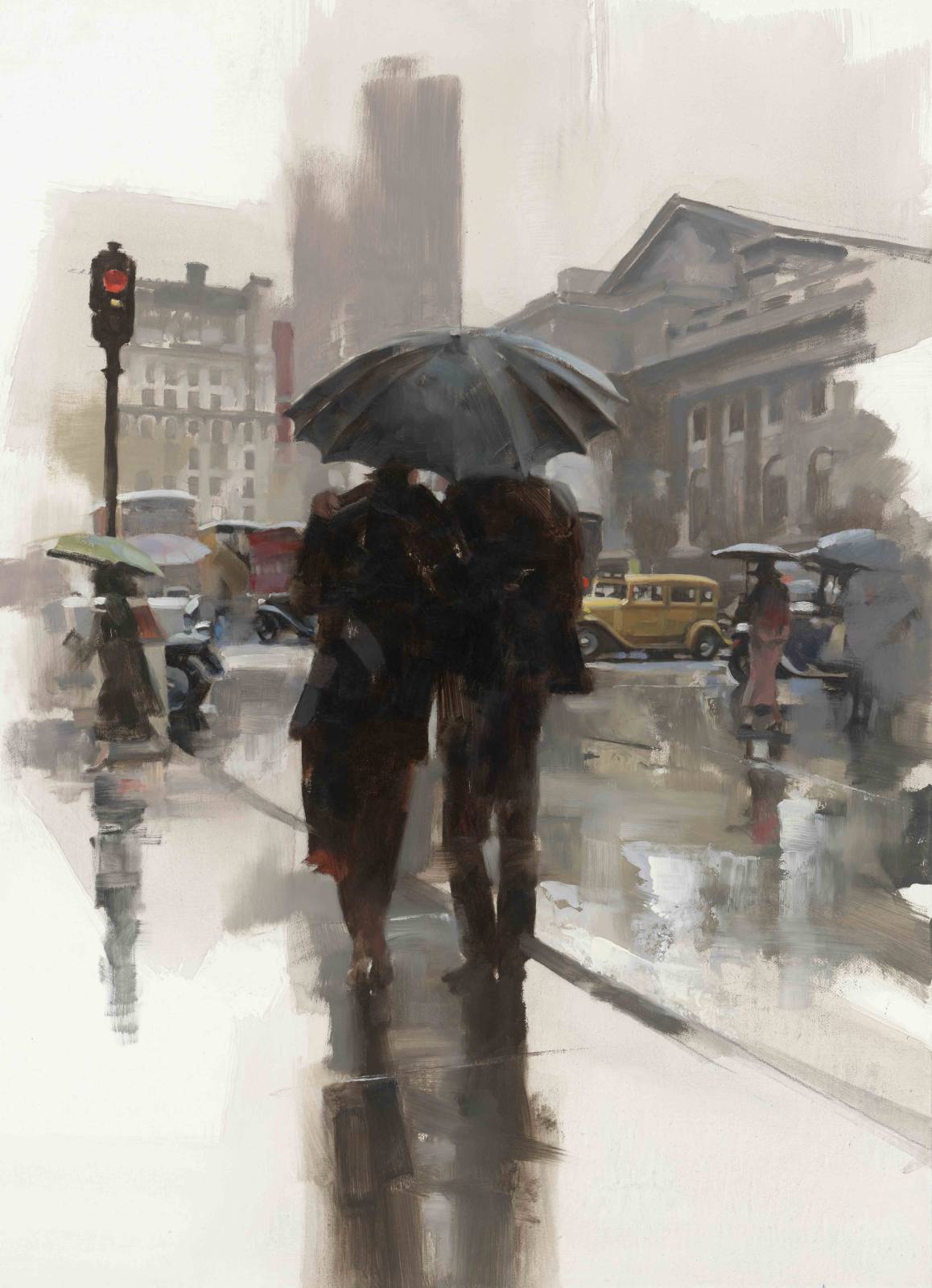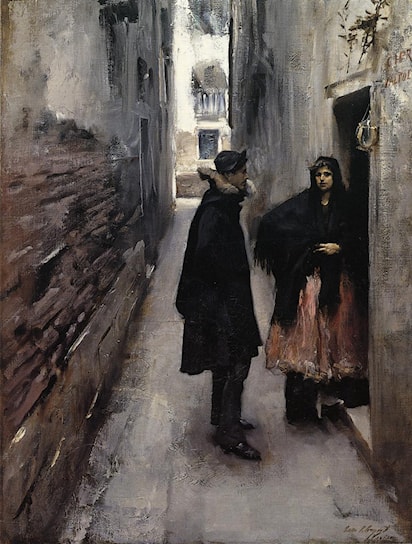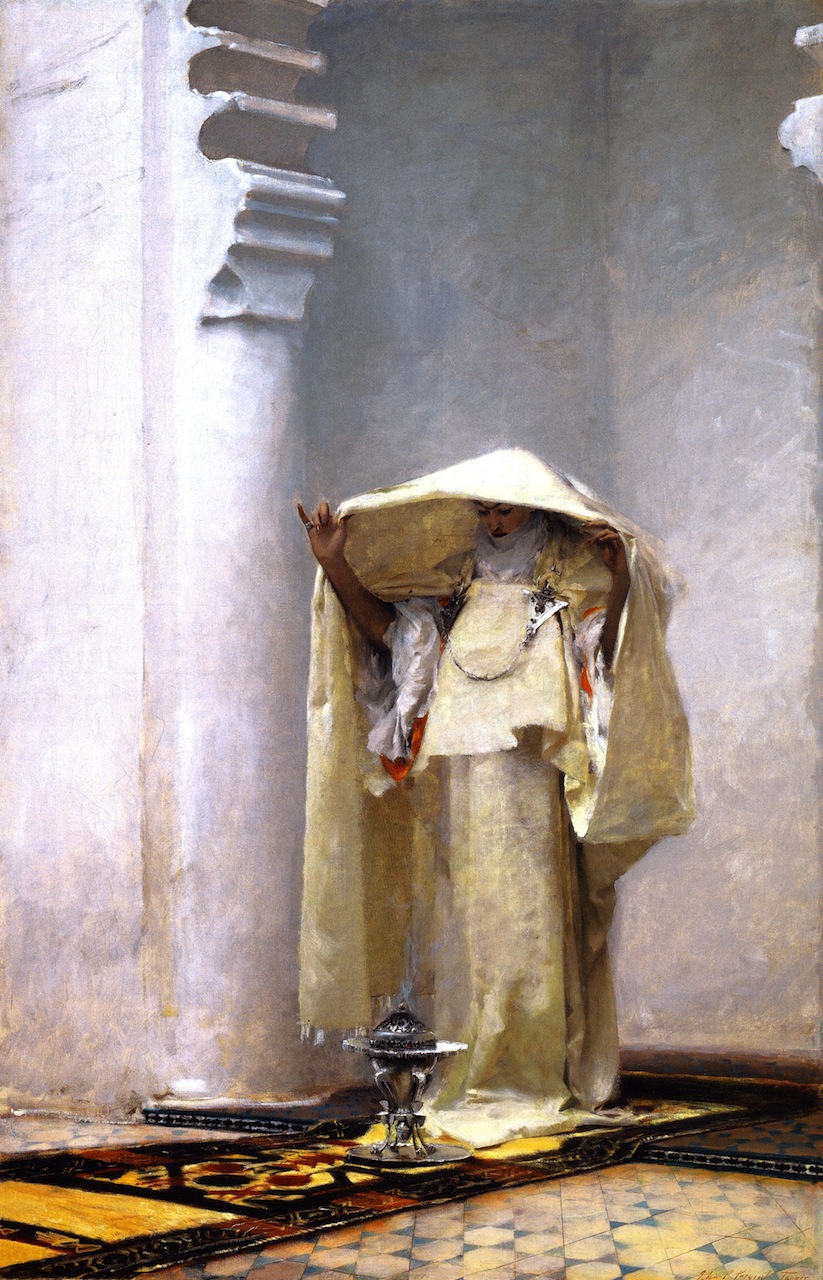Recently in one of my online classes for SmArt School, a few students were having trouble creating visual interest in their compositions. The pieces lacked depth. The culprit wasn’t the design of the main elements, but the distribution of values.
Generally, the students think of the background as dark, but they also wanted to put their main subject in dark clothing, and all the darks in the subject were the same darks as in the background.
They initially thought the farther away from the foreground subject, the darker the background becomes. But unless they were depicting someone in a subway, or darkened room, the background can be lighter.
What was necessary for them to gain depth and enhance the silhouette of the foreground subject was to slightly lighten the background color value and allow most of the darks, even blacks, to be in the subject itself.
To simplify the principle: darkest darks go in the subject; let the background be lighter in value.
Backgrounds can have very subtle shifts in value, and as long as it’s lighter then the darks in the subject, even by a small percentage, the background drops into the perceived depth of the painting, and the subject comes forward.
Notice in my painting above, and in this Sargent painting how the figures stay close to us while the surrounding value creates depth behind it. If the background were to be the same value as the main subject, the viewer would not only lose the silhouette of the character, but the illusion of depth would be lost as well, creating visual confusion.
To simplify the principle: darkest darks go in the subject; let the background be lighter in value.
There’s great flexibility in creating illusion or graphic interest. Certainly you’ve seen paintings where the background is very black. But then usually the main focus is in light, providing contrast and depth, like so many nudes or portrait paintings. The principle can be flipped.
The next time you’re losing control of a painting where it seems to be getting flat— stop, step back and study where your darks are. Then place them mostly in the subject. Study it again and see if it hasn’t gained depth.









Put in such a succinct way. You can even notice how on portraits or dark backgrounds the blacks or darkest darks are usually on the figure.
And it’s great to see in your painting how the buildings are dark in relation to the sky, but they’re still lighter than the figures. Shows how value is always relative to its surroundings.
I am making 80 US dollars per-hr to complete some internet services from home.I have not ever thought like it would even achievable however my confidant mate got $27k only in four weeks easily doing this best assignment and also she convinced me to avail. Look extra details going this web-page.
>>> Www.Worksprofit1.online